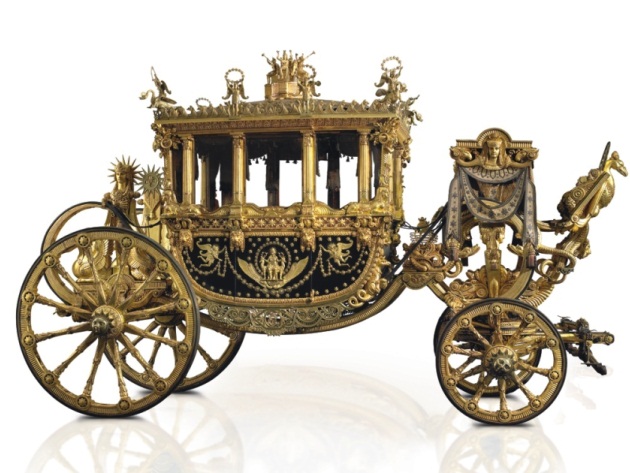
In the “Scuderie Sabaude” (stables of the Savoys) – located within the complex of the Quirinale in the large building constructed in 1874 by architect Antonio Cipolla – we find the most representative examples of this collection of coaches and carriages. The stables, commissioned by the Savoy court, replaced those built by the Popes of the 18th century in the piazza del Quirinale, which had become too small. It was therefore decided that a big L-shaped building should be constructed, large enough to host the stables, a barn, galleries for harnesses, a rotunda for use as a manège, 126 rooms for the staff, and depot areas for the coaches and carriages. A part of the building still hosts the gallery of old harnesses, tackle and livery, “Galleria dei Finimenti e delle Livree”; the historical collection, or “Gabinetto Storico”, of the more valuable items held at the stables; the office of the “Grande Scudiere” or stablemaster (the royal equerry , the officer responsible for managing this important sector of courtly life); and the carriages.
Most of the vehicles used by the court were produced by specialised firms at the close of the 19th century. The only exceptions are the berlins or gala carriages, four of which are Piedmontese and three from the Grand Duchy of Tuscany. The four Piedmontese carriages are the oldest and most valuable items belonging to the Quirinale collection. They were frequently used on the major occasions in the history of the House of Savoy – a Berlingotto carriage built in 1789 with a gilded and painted body; a berlin built in 1817, known as the wedding couple’s coach since it was used on the occasion of the wedding of Victor Emmanuel II; another berlin built in 1817, the body of which was completely painted over with the stories of the Greek hero, Telemachus in search of his father, Ulysses; and the Egiziana (or Egyptian carriage), built for the carnival in Turin of 1819 (the original ivory-coloured backgrounds were then painted black, and the carriage was used as a hearse during the funerals of the sovereigns of the House of Savoy).
Two of the three carriages from the Grand Duchy of Tuscany also date back to the early 19th century (1821-22). These vehicles are simpler, less sumptuous and less markedly original in character than their four splendid Piedmontese counterparts. The 105 carriages of the Quirinale collection also include Gala and Gran gala berlins built in Milan for Victor Emmanuel II (these covered or open carriages were placed at the service of the king, for private purposes, or at the service of court officials), as well as vehicles for country jaunts, small carriages for children, pony cabriolets, and a small Rococo berlin given to the young Prince of Naples and the future King, Victor Emmanuel III.
Information
For the opening times and guidelines please check the official website.
 Condividi
Condividi
Location
To find out about all accessibility services, visit the Rome accessible section.












































